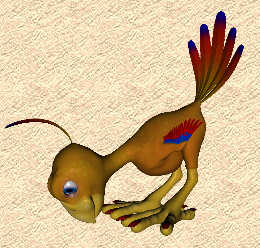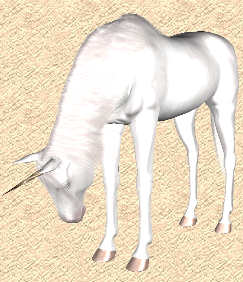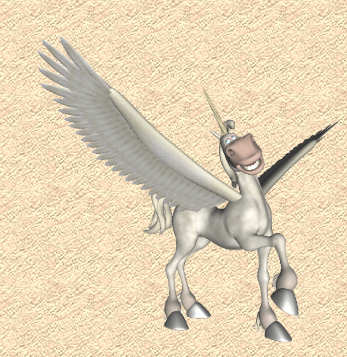Welcome To Magical Creatures And Fur Babies
Home Links Our rainbow bridge Pet facts Humans pet photos The magical pet Seeds of Time Home fairy magical pets and stories human pet stories helping one another questions advice sharing and more
PHOENIX The phoenix is a mythical sacred firebird which originated in the Sub-continent of India in ancient mythologies mentioned in the Egyptian and later the Phoenician and the Greek Mytholog
Appearance and AbilitiesA phoenix is a mythical bird with a tail of beautiful gold and scarlet plumage (or purple and blue, by some sources [1]). It has a 500 to 1,000 year life-cycle, near the end of which it builds itself a nest of myrrh twigs that then ignites; both nest and bird burn fiercely and are reduced to ashes, from which a new, young phoenix or phoenix egg arises, reborn anew to live again. The new phoenix is destined to live as long as its old self. In some stories, the new phoenix embalms the ashes of its old self in an egg made of myrrh and deposits it in the Egyptian city of Heliopolis (sun city in Greek). The bird was also said to regenerate when hurt or wounded by a foe, thus being almost immortal and invincible — it is also said that it can heal a person with a tear from its eyes and make them temporarily immune to death. The phoenix is a symbol of fire and divinity.[2]
A unicorn (from Latin unus 'one' and cornu 'horn') is a mythological creature. Though the modern popular image of the unicorn is sometimes that of a horse differing only in the horn on its forehead, the traditional unicorn also has a billy-goat beard, a lion's tail, and cloven hooves—these distinguish it from a horse. Marianna Mayer has observed (The Unicorn and the Lake), "The unicorn is the only fabulous beast that does not seem to have been conceived out of human fears. In even the earliest references he is fierce yet good, selfless yet solitary, but always mysteriously beautiful. He could be captured only by unfair means, and his single horn was said to neutralize poison. he predecessor of the medieval bestiary, compiled in Late Antiquity and known as Physiologus (Φυσιολόγος), popularized an elaborate allegory in which a unicorn, trapped by a maiden (representing the Virgin Mary), stood for the Incarnation. As soon as the unicorn sees her, it lays its head on her lap and falls asleep. This became a basic emblematic tag that underlies medieval notions of the unicorn, justifying its appearance in every form of religious art. The two major interpretations of the unicorn symbol hinge on pagan and Catholic symbolism. The pagan interpretation focuses on the medieval lore of beguiled lovers, whereas some Catholic writings interpret the unicorn and its death as the Passion of Christ. The unicorn has long been identified as a symbol of Christ by Catholic writers, allowing the traditionally pagan symbolism of the unicorn to become acceptable within religious doctrine. The original myths refer to a beast with one horn that can only be tamed by a virgin maiden; subsequently, some Catholic scholars translated this into an allegory for Christ's relationship with the Virgin Mary. Interestingly enough, the collective term for a grouping of unicorns is "a blessing of unicorns". The unicorn also figured in courtly terms: for some 13th century French authors such as Thibaut of Champagne and Richard de Fournival, the lover is attracted to his lady as the unicorn is to the virgin. With the rise of humanism, the unicorn also acquired more orthodox secular meanings, emblematic of chaste love and faithful marriage. It plays this role in Petrarch's Triumph of Chastity. The royal throne of Denmark was made of "unicorn horns". The same material was used for ceremonial cups because the unicorn's horn continued to be believed to neutralize poison, following classical authors. n heraldry, a unicorn is depicted as a horse with a goat's cloven hooves and beard, a lion's tail, and a slender, spiral horn on its forehead.[16] Whether because it was an emblem of the Incarnation or of the fearsome animal passions of raw nature, the unicorn was not widely used in early heraldry, but became popular from the 15th century.[16] Though sometimes shown collared, which may perhaps be taken in some cases as an indication that it has been tamed or tempered, it is more usually shown collared with a broken chain attached, showing that it has broken free from its bondage and cannot be taken again. It is probably best known from the royal coat of arms of Scotland and the United Kingdom: two unicorns support the Scottish arms; a lion and a unicorn support the UK arms. The arms of the Worshipful Society of Apothecaries in London has two golden unicorn supporters (although, as emblazoned on its homepage, they have horses', not lions', tails). [16]
PegasusFrom Wikipedia, the free encyclopediaIn Greek mythology, Pegasus (Greek: Πήγασος, Pégasos, 'strong') was a winged horse sired by Poseidon, in his role as horse-god, and foaled by the Gorgon Medusa.[1] EtymologyThe poet Hesiod connects the name Pegasus with the word for "spring, well", pēgē; however, the name's origins may come from words in the Luwian language: pihassas, meaning "lightning"; or from Pihassasas, the name of an ancient weather god meaning "god of lightning". Everywhere the winged horse struck his hoof to the earth, an inspiring spring burst forth: one on the Muses' Mount Helicon, the Hippocrene ("horse spring"), at the behest of Poseidon to prevent the mountain swelling too much and another at Troezen. Hesiod relates one story of how Pegasus was peacefully drinking from a well when the hero Bellerophon captured him using a golden bridle given to him by Athena. He also says Pegasus carried thunderbolts for Zeus, and that everywhere the winged horse struck his hoof to the earth a fresh spring burst forth. One of these springs was upon the Muses' Mount Helicon; the Hippocrene ("horse spring"). This was at the behest of Poseidon to prevent the mountain from swelling too much. Another spring appeared at Troezen.
Go to next page about magical pets now
Art by Lisa Copyright 2009, Seeds Of Time ~ The Fairies' Journey
Original Staff and Owners - Lisa, Rosie, And Eva
|




